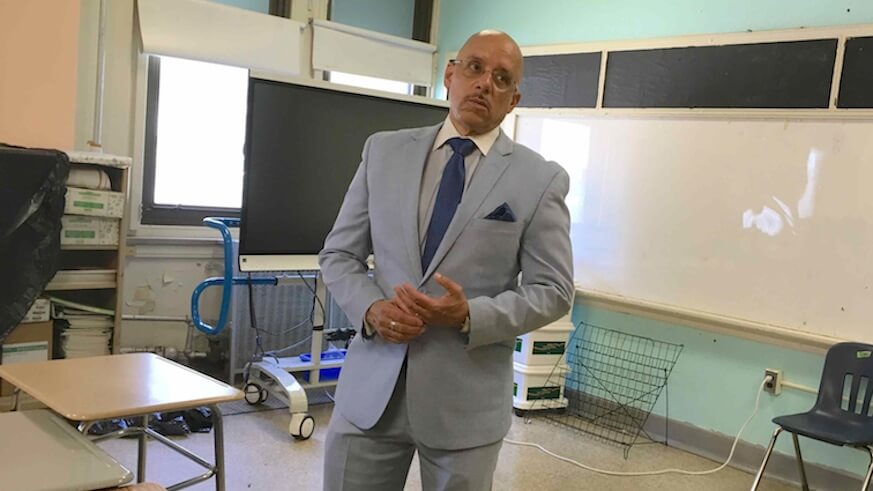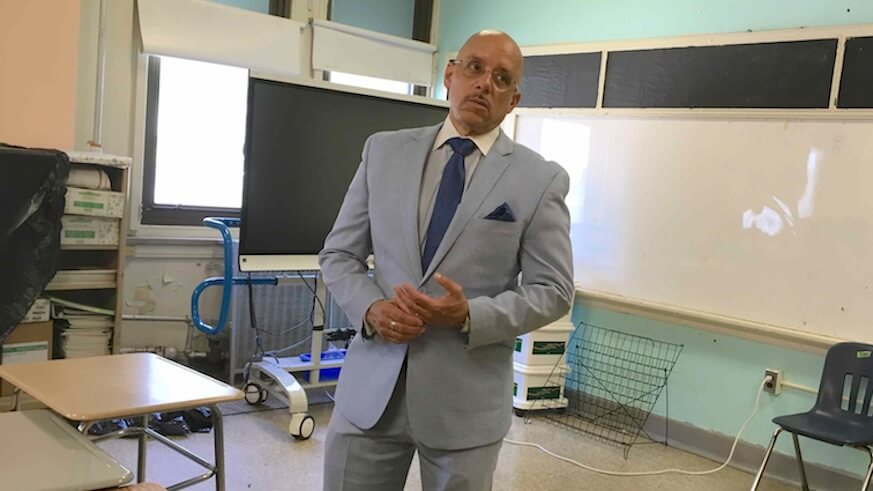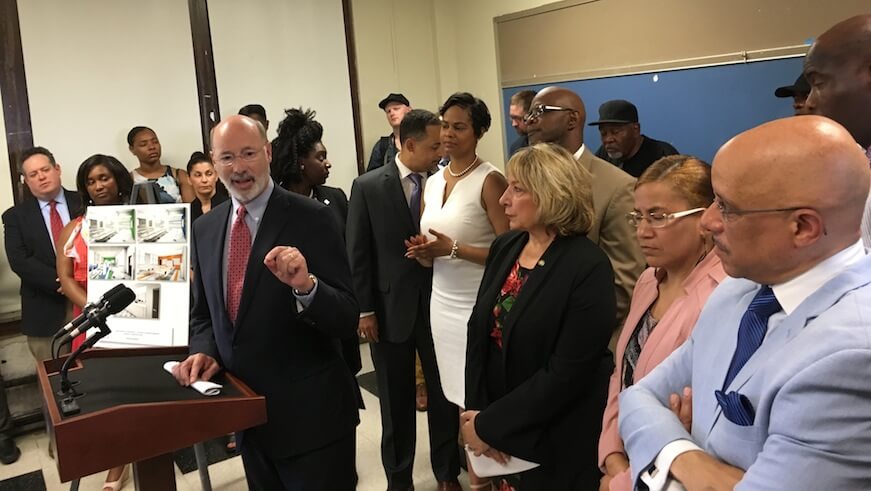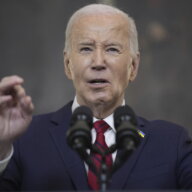Looking around a kindergarten classroom at Roosevelt Elementary School in Germantown where peeling lead paint had been discovered, state Sen. Vincent Hughes asked the question on everyone’s mind.
“You’re going to fix all this in two months?” he asked.
In fact, the answer is yes.
Thanks to the $15.6 million in joint city and state funding that was announced on Friday, the School District of Philadelphia will now be be able to remediate issues with peeling lead paint, mold and asbestos across its aged public school buildings by Aug. 27, before students pour back in for the fall semester.
“This is the first step in a long process,” said Gov. Tom Wolf at a press conference in Roosevelt on Friday. “We have a lot of work to do.”
While overall, Philly schools have been estimated to require about $5 billion in repairs and upgrades, this emergency funding is expected to help the district address urgent problems with asbestos, lead and mold – which, after lengthy exposure, can potentially create serious health hazards, especially for children. The School District had already planned a “rigorous work schedule” over the summer to address these problems, but the new funding assures that they will get the job done, officials said.
The environmental issues in school buildings came into sharper focus due to the Inquirer’s “Toxic City” investigative series, which reported on environmental problems in some aging Philadelphia schools that in some cases could lead to serious medical issues if left untreated. Leaders at the press conference acknowledged the media helped bring home the urgency of the environmental hazards.
“One of the great benefits we all get from a free and unfettered press is that we learn of issues we really need to address,” Gov. Wolf said. “Keep pushing to make sure we do the right thing. This is the right thing to do.”
Some 59 projects in 57 school buildings will get worked on thanks to the funds, $7.6 million of which came from the state (supplied by the state Department of Education and Department of Human Service) and $8 million from the School District of Philadelphia. About 90 percent of the district’s schools were created before 1978, when a federal law banned the use of lead paint. But beyond just the environmental issues, a January 2017 report said that Philly schools needed a total of $5 billion in rehabilitation to cover a total of 12,000 repairs.
Some of the other projects planned by the School District include replacing aging HVAC systems to prevent mold, removing asbestos from seven locations with the Philly Department of Health, renovating 11 pre-K to 3rd grade classrooms for early literacy classes, and major construction at five schools. By 2019, Roosevelt will get $7.8 million of upgrades as it is converted from a middle school to an elementary school.
“The more than $15 million investment that begins the cleanup of health risks in Philadelphia schools is long overdue and it’s a huge win for our children,” Sen. Hughes said in a statement, noting that Philly schools still face a variety of funding issues. “The governor and the school district have made this investment happen and they should be congratulated for their work, but we are not finished in finding even more resources to help our children. Today, let’s celebrate this wonderful investment in our children’s future; tomorrow, let’s get back to work and finish the job.”
With the recent dissolution of the School Reform Commission, Philadelphia schools will be under local control as of July 2018. The new Board of Education will hold its first meeting ever at 5 p.m on Monday, July 9, at the School District of Philadelphia offices at 440 N. Broad Street.
































